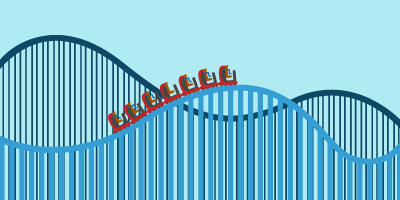Reverse supply chain gotcha for demand forecasting

As far forecasting is concerned, there is an old saying Gargage In Garbage Out which says that even the best forecasting technology cannot fix incorrect data inputs. Although, in our experience the sales data hold by retailers and manufacturers are usually rather clean. In this day and age of electronic transactions, the amount of sales data incorrectly entered is vanishingly small.
Nevertheless, there are still subtleties when it comes to forecasting. In particular, Lokad strives to deliver demand forecasts rather than sales forecasts.
When consolidating their historical demand data, we have noticed that returns, part of the reverse supply chain process, and cancelations, frequently end-up counted as negative in the historical consolidated sales. Such a pattern typically generates negative sales that are rather easy to spot even if they happen to be rather rare as the number of returns is typically small compared to the number of orders.
This behavior is correct from an accounting viewpoint, but unfortunately misleading from a forecasting viewpoint. Let’s see why.
Let’s consider that 9 units of a product are ordered on Monday. Upon delivery on Tuesday, considering overnight shipping, 3 units are returned. In the end, only 6 units have been really sold on Monday. Yet, what is the correct demand forecast for Monday?
- If we assume that 6 units is the right demand for Monday, then only 6 units are stored; which lead to only 6 clients being served on Monday, the remaining 3 clients being most likely turned off because of the lack of available merchandise. Then, on Tuesday, 2 units (instead of 3) are still returned. This approach leads to 4 effectives sales for Monday.
- If we assume that 9 units is the right demand for Monday, then 9 units are stored and consequently shipped. Minus 3 returns on Tuesday, this approach leads to 6 effective sales for Monday.
Obviously, the second scenario is better for the retailer. As a general guidelines, data that come from the reverse supply chain should have no impact on the demand forecasts.
Then, concerning the cancelations, there is a grey area.
- If an order is cancelled quickly, before the item had any chance of being shipped, the item becomes immediately available for a new order to be placed. In such a situation, it makes sense not to count the quickly-canceled item as part of the demand.
- Yet, if the cancelation happens a couple of days after the order, but still before the shipment, then one item in inventory has been considered as unavailable during the whole period in between the order and the cancellation. Not counting this long-delayed-cancelation order as demand would potentially prevent actual customers from purchasing the item they want.
The second insight is even stronger if the cancelation is caused by the long shipping delay in the first place.
As a general guideline, all operations that happen to allocate inventory need to be counted as demand, even if those operations happen to be canceled later on. The cancelation can be considered an uncertain replenishment but not as a smaller demand. For a top seller associated to a rather stable return percentage, this is would eventually mean that the stock on order representing the inventory expected to arrive in the future, could be increased according to the amount of sales in-process to reflect the expected cancelation rate.


